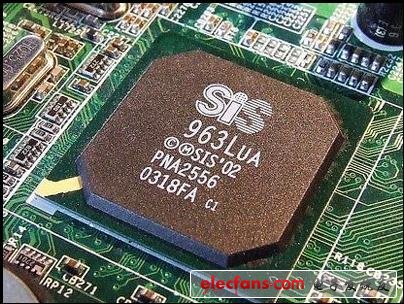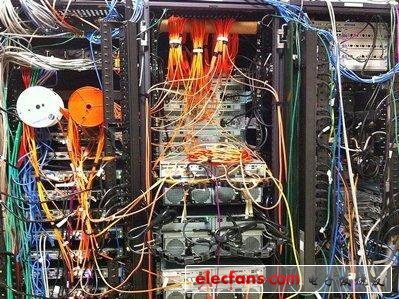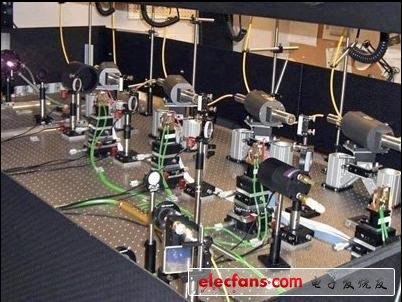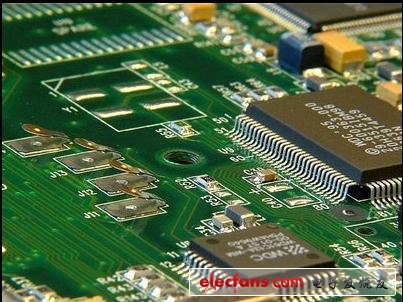9. The project can ensure that the imported chips are not counterfeit and defective
Most of the raw material production in the United States is outsourced to overseas production, and the US Department of Defense has doubts about the reliability of systems developed using imported integrated circuits.
Since the U.S. Department of Defense cannot precisely monitor the production of each chip, DARPA is developing the Integrity and Reliability of Integrated Circuits project to obtain functional information of circuits through technology without destroying individual circuits.
This means DARPA will be able to look at a circuit and make sure it's working exactly as specified.
The technology could also be used in the civilian sector to ensure that users' computer hardware does not have a keylogger or is not a fake. In addition, if the technology can be used commercially, it could also be used in the field of computer repair.

10. Methods to easily detect biological and chemical weapons attacks
Current technology required to detect chemical and biological weapons is large, cumbersome and expensive.
DARPA's Compact Mid-ultraviolet technology program is making the detection of such weapons more compact and mobile. The project aims to develop a device that uses ultraviolet light, and any progress in the project will be used in the fields of drinking water purification and biological and chemical weapon tracking.

11. The project aims to make computing more energy efficient
Computing speed is measured in floating-point operations per second, which is the number of simple calculations that the system can perform per second. Nowadays, such calculations are usually performed in the range of billions of floating-point operations per second. The energy consumption of floating-point operations per second is also very important and is a measure of the effective use of energy. So how can performance be linked to improving energy consumption?
DARPA wants to expand the current standard of 1 gigaflop per watt to 75 gigaflops per watt. The Power Efficiency Revolution For Embedded Computing Technologies project is expected to completely change the consumption of energy.
If the project succeeds, the 7,500 percent energy savings could allow smartphones to run for weeks on end, while laptops would need to be recharged about as often as a Prius needs to be refueled.

12. Cutting-edge nano-processing projects
DARPA has invested heavily in nanotechnology, and its core concepts have been proven. The technology is feasible, but the difficulty still lies in mass production.
In the Tip-Based Nanofabrication program, DARPA is trying to make the controlled production of nanoscale materials a reality. It has been demonstrated that nanotube "forests" can grow, and controlling and managing this growth is the goal of this program.
If the project succeeds, a whole new technological field will open up. The controlled production of nanotubes, nanowires and quantum dots will allow the creation of nanomachines from raw materials that are currently unavailable. The fields of medicine and consumer technology are eagerly awaiting the results of this research.

13. High-efficiency, high-energy lasers to protect drones
As you know, DARPA is very interested in laser technology. DARPA plans to combine lasers operating at different wavelengths into a single beam in order to increase the intensity of the beam. DARPA wants to develop an efficient laser that can maintain a single intensity beam.
The goal of the Architecture for Diode High Energy Laser System project is to create a new high-intensity laser that can be immediately used on unmanned aircraft to defend against attacks.
For civilian use, lasers have been widely used in the industrial field. A better laser product can have greater commercial prospects.

14. Three-dimensional integrated circuits
Integrated circuits are generally two-dimensional objects, but DARPA wants to break through this limitation and try to develop three-dimensional integrated circuits.
If successful, the DARPA project would mean that computers could become even faster because an important limitation has been overcome. One factor holding back further growth in two-dimensional integrated circuits is that their complexity keeps expanding, leaving no room to run all the necessary connections on a two-dimensional circuit board.
The three-dimensional conceptual circuit, while difficult to implement, would allow DARPA to scale up integrated circuit technology and make it more compact.

Previous article:Twenty U.S. Department of Defense military projects that are expected to change people's lives (I)
Next article:Twenty U.S. Department of Defense military projects that are expected to change people's lives (Part 5)
- High signal-to-noise ratio MEMS microphone drives artificial intelligence interaction
- Advantages of using a differential-to-single-ended RF amplifier in a transmit signal chain design
- ON Semiconductor CEO Appears at Munich Electronica Show and Launches Treo Platform
- ON Semiconductor Launches Industry-Leading Analog and Mixed-Signal Platform
- Analog Devices ADAQ7767-1 μModule DAQ Solution for Rapid Development of Precision Data Acquisition Systems Now Available at Mouser
- Domestic high-precision, high-speed ADC chips are on the rise
- Microcontrollers that combine Hi-Fi, intelligence and USB multi-channel features – ushering in a new era of digital audio
- Using capacitive PGA, Naxin Micro launches high-precision multi-channel 24/16-bit Δ-Σ ADC
- Fully Differential Amplifier Provides High Voltage, Low Noise Signals for Precision Data Acquisition Signal Chain
- Innolux's intelligent steer-by-wire solution makes cars smarter and safer
- 8051 MCU - Parity Check
- How to efficiently balance the sensitivity of tactile sensing interfaces
- What should I do if the servo motor shakes? What causes the servo motor to shake quickly?
- 【Brushless Motor】Analysis of three-phase BLDC motor and sharing of two popular development boards
- Midea Industrial Technology's subsidiaries Clou Electronics and Hekang New Energy jointly appeared at the Munich Battery Energy Storage Exhibition and Solar Energy Exhibition
- Guoxin Sichen | Application of ferroelectric memory PB85RS2MC in power battery management, with a capacity of 2M
- Analysis of common faults of frequency converter
- In a head-on competition with Qualcomm, what kind of cockpit products has Intel come up with?
- Dalian Rongke's all-vanadium liquid flow battery energy storage equipment industrialization project has entered the sprint stage before production
- Allegro MicroSystems Introduces Advanced Magnetic and Inductive Position Sensing Solutions at Electronica 2024
- Car key in the left hand, liveness detection radar in the right hand, UWB is imperative for cars!
- After a decade of rapid development, domestic CIS has entered the market
- Aegis Dagger Battery + Thor EM-i Super Hybrid, Geely New Energy has thrown out two "king bombs"
- A brief discussion on functional safety - fault, error, and failure
- In the smart car 2.0 cycle, these core industry chains are facing major opportunities!
- The United States and Japan are developing new batteries. CATL faces challenges? How should China's new energy battery industry respond?
- Murata launches high-precision 6-axis inertial sensor for automobiles
- Ford patents pre-charge alarm to help save costs and respond to emergencies
- New real-time microcontroller system from Texas Instruments enables smarter processing in automotive and industrial applications
- i.MX6ULL Embedded Linux Development 6-System Burning to eMMC and the Pitfalls Encountered!
- Gowin GW1N development board logic analyzer speed test
- Which MSP430FR6972 development board is suitable?
- Please recommend some easy-to-understand books or web links about phase detectors and frequency detectors. Thank you.
- PS2 Interface.pdf
- DIY a CNC switching power supply, you need to master these knowledge
- General architecture of the hardware system of the C6000 series DSP
- Two symmetrical cascade amplifiers in one cavity + layout looks very pleasing to the eye
- Give a suggestion to NUCLEO development board
- Teach you how to turn a brushless motor

 CMMISM for Systems Engineering
CMMISM for Systems Engineering Department of Defense test method standard MIL-STD-1916, the Department of Defense preferred product acceptance method
Department of Defense test method standard MIL-STD-1916, the Department of Defense preferred product acceptance method MIPS32 4KSD Kernel Software User Manual
MIPS32 4KSD Kernel Software User Manual











 京公网安备 11010802033920号
京公网安备 11010802033920号